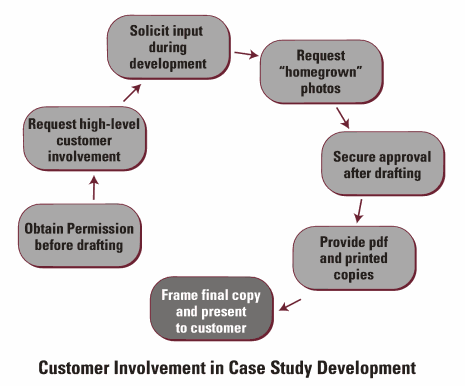
The business case study is an explanatory and detailed document that explains the business and its processes. The case study tells about the business and also explains about the departments and the processes that the business undertakes.
The case study is the map and snapshot of the business and what the business does. In addition to this, the case study also explains how the business runs and manufactures goods and commodities.
The case study is an important document and in some ways, it is a secretive document too which gives trivial details of the business that can be contained and restricted from the reach of the competitors and rivals (Ellet, W. 2007).

The case study has a huge impact o the image of the business too. The case study is the document that markets the business in different ways. The case study reaches millions of people and many people follow the case study of a successful and well-established business.
The case study is a tool to market the firm and create a good and successful image in the minds of readers.
The writers cover the failures and successes of the firm in the case study and try to impress the readers from the case study and success stories, defined and illustrated in the case study (Czarniawska, B. 2008).

The first step to write the case study is that we need the data. The data is everything when it comes to the case study, the writers need to gather a lot of data of the company before they can start writing the case study.
 The data is basically the required information and sources on which the case study will be built. For example, if it is the manufacturing.company, the data will be related to the sales and costs, and expenses and profits. In other companies, the data can be about the numbers of customers served or the level of production, and effectiveness.
The data is basically the required information and sources on which the case study will be built. For example, if it is the manufacturing.company, the data will be related to the sales and costs, and expenses and profits. In other companies, the data can be about the numbers of customers served or the level of production, and effectiveness.
So the data is the tool and key part of the case study. This is mainly because whatever we are going t say in the case study, will be supported, strengthened, and bolstered by the data, otherwise the trust level of readers and authenticity of the case study will weak. The case study without the data is questionable.
Then the second important thing is to gather sufficient data that is relevant in every sense and is also true and real (Siggelkow, N. 2007).
The next step is to write a case study. The writing part of the case study is important and most crucial and it is everything we are aiming for. So, when the writing of the case study begins, there are certain keys and tips that the writer needs to consider and follow.
The first thing is that the case study should follow the correct tone. The writer should follow the correct voice and tone. The tone of the case study of a bank or a financial institute will be different from the tone of the case study of a food company.
Similarly, if the case study is for a technology-related company then it will be using a lot of jargons and the vernacular case study will be for the people who belong to the related fields only (Czarniawska, B. 2008)..
The next tip is about the title. Experts say that the title of the case study should be attention-seeking and relevant. The title should also be relevant and specific. An important thing to remember about the case study is that the text should not be lengthy and the writer should avoid banality (Davidow, W. H. 2012).

The case study should include the contact information too. The case study is written for the purpose of faulting about your business and business operations and for telling others but the good things that are done by your business.
So, if something likes it and wants to contact the business and intends to connect with it then it should be able to do it. For that, it is important that the writer leaves the contact information at the bottom of the case study (Davidow, W. H. 2012).

The next part of the case study is to design it. The aesthetics are very important. Every good case study needs a great design, and it can be helpful to bring in a designer to add some visual interest to the piece. Simple things, like using text boxes to pull out key facts, statistics, and quotes, and inputting related graphics and charts
can make all of the difference in your case study and should be used liberally to enhance its value and interest. There are different designers who can design the case study, and the company should take its services to design it. The good design will appeal to the people and the readers will enjoy reading it.
The dull and pedestrian pages and cover will not appeal to anyone and will not grab the attention of the observers and potential readers (Czarniawska, B. 2008). The last step to write the case study is to publish it. The publishing part involves the decision to decide to a medium where it will be published.
The case studies are often written and published in books. Sometimes they are uploaded on the websites and the webpages. The case studies are also turned into podcasts, articles, and videos for YouTube and other platforms (Siggelkow, N. 2007).
The conclusion is that the case study tells about the business and also explains about the departments and the processes that the business undertakes. The case study is the map and snapshot of the business and what the business does. In addition to this, the case study also explains how the business runs and manufactures goods and commodities.
In short, the case study is the document that markets the business in different ways. The case study reaches millions of people and many people follow the case study of a successful and well-established business. To sum up, we state that the writing part of the case study is important and most crucial and it is everything we are aiming for. So, when the writing of the case study begins, there are certain keys and tips that the writer needs to consider and follow.


